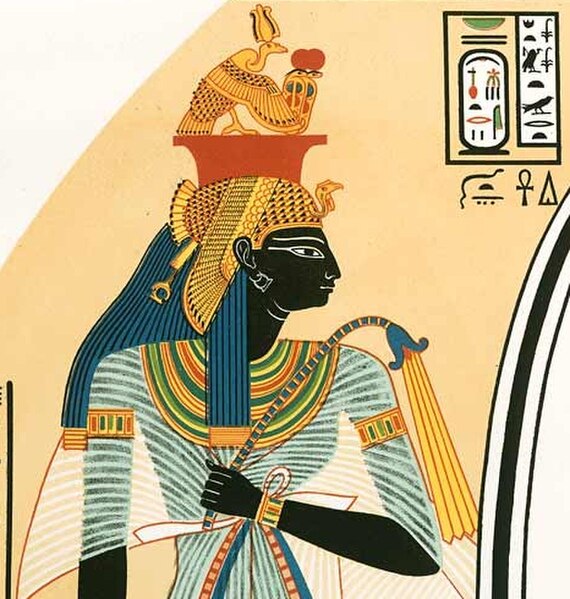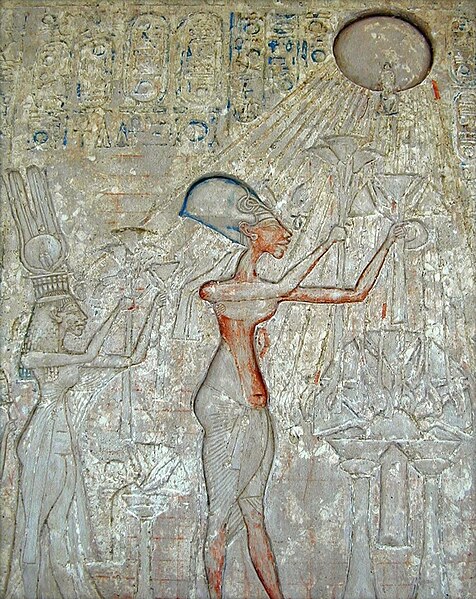Meritaten, also spelled Merytaten, Meritaton or Meryetaten, was an ancient Egyptian royal woman of the Eighteenth Dynasty of Egypt. Her name means "She who is beloved of Aten"; Aten being the sun-deity whom her father, Pharaoh Akhenaten, worshipped. She held several titles, performing official roles for her father and becoming the Great Royal Wife to Pharaoh Smenkhkare, who may have been a brother or son of Akhenaten. Meritaten also may have served as pharaoh in her own right under the name Ankhkheperure Neferneferuaten.
Bust of a daughter of Akhenaten and Nefertiti, perhaps the young Meritaten, in the Louvre, Paris
Amarna Princess - Museum in Berlin
Alabaster sunken relief depicting Akhenaten, Nefertiti, and daughter Meritaten, with early Aten cartouches on king's arm and chest, from Amarna, Egypt, Eighteenth Dynasty, The Petrie Museum of Egyptian Archaeology, London
Smenkhare and Meritaten shown in the tomb of Meryre II
Eighteenth Dynasty of Egypt
The Eighteenth Dynasty of Egypt is classified as the first dynasty of the New Kingdom of Egypt, the era in which ancient Egypt achieved the peak of its power. The Eighteenth Dynasty spanned the period from 1550/1549 to 1292 BC. This dynasty is also known as the Thutmoside Dynasty) for the four pharaohs named Thutmose.
Ahmose-Nefertari. Ahmose-Nefertari was the daughter of Seqenenre Tao, a 17th dynasty king who rose up against the Hyksos. Her brother Ahmose, expelled the Hyksos, and she became queen of a united Egypt. She was deified after she died.
Head of an Early Eighteenth Dynasty King, depicting either Ahmose I, Amenhotep I or Thutmose I, c. 1539–1493 BC, 37.38E, Brooklyn Museum
Akhenaten and his family adoring the Aten. Second from the left is Meritaten, daughter of Akhenaten.
Block Statue of the Second Prophet of Amun Ay, c. 1336–1327 BC, 66.174.1, Brooklyn Museum








